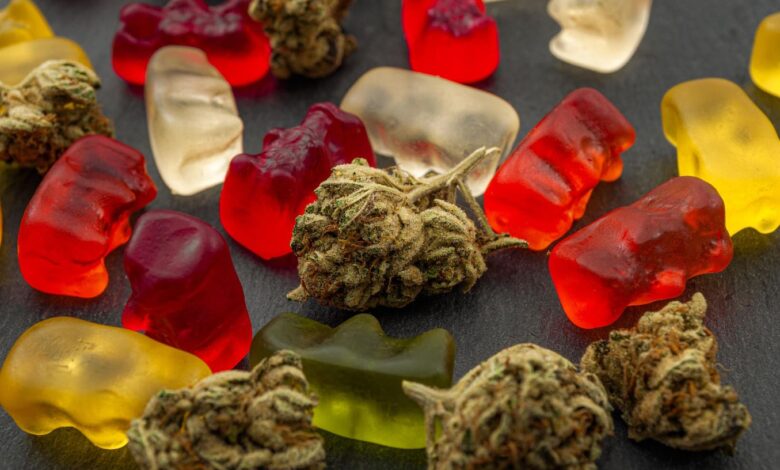Rising Youth Cannabis Poisonings Highlight Need For Safe Home Storage

📝 usncan Note: Rising Youth Cannabis Poisonings Highlight Need For Safe Home Storage
Disclaimer: This content has been prepared based on currently trending topics to increase your awareness.
Cannabis poisoning by young children, especially with gummies and other edibles, has dramatically increased in recent years.
getty
Already the most widely-used federally illegal drug in the U.S., cannabis use by adults aged 19 to 30 and 35 to 50 has increased in the last five and 10 years, according to the National Institute on Drug Abuse. These are also the age groups that are likeliest to have minors at home. So it’s not surprising that severely harmed children and teens getting their hands on cannabis products are showing up in increasing numbers in hospital emergency rooms. These poisonings highlight the need for safe home storage of cannabis products.
Legal Picture
Just as with securing guns at home, safe cannabis storage requirements vary by state. If you’re among the 52 million American cannabis users, check your state’s website for laws and regulations where you live. If you have minors at home — or frequent young visitors, like neighborhood kids or your grandchildren — implementing safe cannabis storage at home can not only keep you out of legal trouble, it can save the life of a loved one.
“Protecting young people is one of the primary reasons to support a legal, regulated cannabis market,” declares Michelle Rutter Friberg, director of government relations for the National Cannabis Industry Association. “History has shown that prohibition is an insufficient policy decision and has never kept marijuana out of the hands of youth: it has only empowered the illicit market, where there are no ID checks or safety standards. By contrast, every state with a regulated cannabis market requires strict age verification, child-resistant packaging, clear labeling, and strong penalties for selling to minors.” Despite laws and regulations to this effect, as well as state crackdowns on unregulated growers and sellers, underaged users are still getting their hands on cannabis products with sometimes devastating consequences.
Growing Emergency
“In 2015, our poison control center at Children’s Hospital of Philadelphia recorded only four cases of children younger than six years old intoxicated by THC. In 2023 we had 332 cases, and now we are notified of more than a case each day,” reports Kevin Osterhoudt, MD, a pediatric emergency medicine specialist and a member of the Executive Committee of the American Academy of Pediatrics’ Council on Violence, Injury and Poisoning Prevention. This is not just an issue for his urban hospital, he observes: “This is a problem being seen all across the U.S. and Canada.”
Edibles packaged as treats are a main cause of the hospitalizations. “U.S. Poison Control Centers have experienced sizeable increases in cases of children ingesting large amounts of highly potent edible tetrahydrocannabinol (THC, the chemical primarily responsible for marijuana’s psychological effects) products every year for the past five years,” shared Osterhoudt with a colleague in a March 2022 CHOP post titled “Rise in Child Injury from Cannabis: Not the High We Wanted.” It certainly isn’t the high that panicked parents are after when their children display inexplicable symptoms like dizziness, drowsiness, loss of balance, nausea, difficulty breathing, non-responsiveness, even loss of consciousness.
Two- and three-year-olds make up more than half of all cases reported to poison centers, Osterhoudt reports. For his hospital, he adds, approximately two thirds had ingested gummies or other edibles.
“Decades of injury prevention experience have taught us that it’s a bad idea to put drugs into candies and other treats that are naturally attractive to children,” the physician points out. Most of these ingestions happen within the minor’s home, so keeping cannabis products out of children’s and teen’s hands is the best way to prevent harm, short of not having them in the house at all, he advises.
Unsurprising Outcomes
“Cannabis products aren’t only a problem for young children,” the ER doctor adds. “Today’s marijuana has a very high THC concentration and emergency departments are seeing greater numbers of teenagers with unresponsiveness, episodes of paranoia or anxiety, seizure-like movements, or symptoms of psychosis associated with THC use. A severe vomiting syndrome called ‘cannabinoid hyperemesis syndrome’ has been recognized.”
Lauren Hartman, MD sees the increase in her Berkeley-based adolescent medical practice as well. “Among teenagers, we’re seeing a lot more marijuana vaping, and with that comes a significant rise in something called cannabinoid hyperemesis syndrome, or CHS.” This condition is tied to chronic use and causes recurring episodes of severe nausea and vomiting. “That can be really debilitating for teens,” she cautions. Hartman points out a distinctive clue that helps her team diagnose the condition. “Teens consistently tell us they feel better when they take hot showers or baths. It sounds unusual, but it’s such a reliable pattern that it often helps confirm the diagnosis.” Perhaps parents can be on the alert for unusual bathing patterns in their teens for a possible drug problem. “The only effective treatment is completely stopping cannabis use,” the California physician warns.
Secure Storage
“Most exposures happen at home, which means parents are our most important
partners in prevention,” Hartman comments, adding, “But just as we’ve learned with guns, hiding something on a high shelf isn’t a reliable way to keep kids safe. Cannabis products need the same security measures: locked storage that’s completely out of children’s reach and sight.”
The industry can improve its safety with child-resistant packaging, clear warning labels and poison control numbers on every product, she suggests. Beyond individual and industry precautions, “we need broader public health campaigns to ensure parents fully understand these risks before bringing cannabis products into homes with children.”
There are various ways to secure your cannabis products away from young hands. They can be placed in a locked room or placed in a locked receptacle. Brown Safe Manufacturing is one of the companies making security systems that protect your family, while also protecting your cannabis. “We have been producing safes specifically designed for cannabis storage since the medical marijuana industry began to expand, with tailored solutions for growers, processing facilities, and dispensaries, as well as personal use,” says Lynel Brown, the company’s president. “Our climate-controlled safes ensure that environmental factors such as moisture and heat are managed to prevent degradation, mold, or bacterial growth, which is particularly important for cannabis storage,” she adds. Climate control to manage heat and humidity is ideal for keeping your cannabis fresh. Traditional safes and many mass market receptacles don’t offer that. Odor control is another consideration, especially if you have pets at home. At the very least, you want UV, air and watertightness.
In some cases, as with Brown’s safes, the storage can be dual purpose, avoiding the need for additional space or investment. “Our safes are also ideal for storing jewelry, cash, handguns, watches, documents, sensitive electronics, and other irreplaceable items,” Brown suggests. Peace of mind can be practical too.
Location, Location, Location
“Home safes are typically installed in discreet, secure locations that balance accessibility with protection,” Brown shares. These often include master bedroom closets, home offices, or dedicated security rooms. “For larger safes or vaults, basements or garages are often chosen, provided they are climate-controlled to prevent humidity issues.” Given the firm’s work with high end home design professionals, there is frequent collaboration with clients to identify optimal locations based on the home’s layout, security requirements, and environmental conditions, Brown explains. Demand has definitely increased, she adds, along with consumption growth of cannabis products and broader legalization.
Growth Industry
Archive Market Research estimates the specialized storage industry market size at $1.5 billion in 2025. “Assuming a Compound Annual Growth Rate (CAGR) of 15% (a conservative estimate given the market’s dynamism), the market is projected to reach approximately $4.8 billion by 2033,” AMR reports. “This growth is fueled by several key factors, including increasing consumer demand, stricter regulations necessitating specialized storage solutions, and the rise of cannabis-infused products demanding advanced preservation techniques. Furthermore, advancements in packaging technologies, such as child-resistant and tamper-evident containers, are driving market expansion.”
As the cannabis and cannabis storage industries grow, Friberg has this recommendation: ““We encourage adults who choose to use cannabis to treat it responsibly: keep it locked up, out of sight, and never share it with anyone underage.”
***
Author’s Note: Interviews for this article were conducted by email between August 20 and August 23, 2025.




